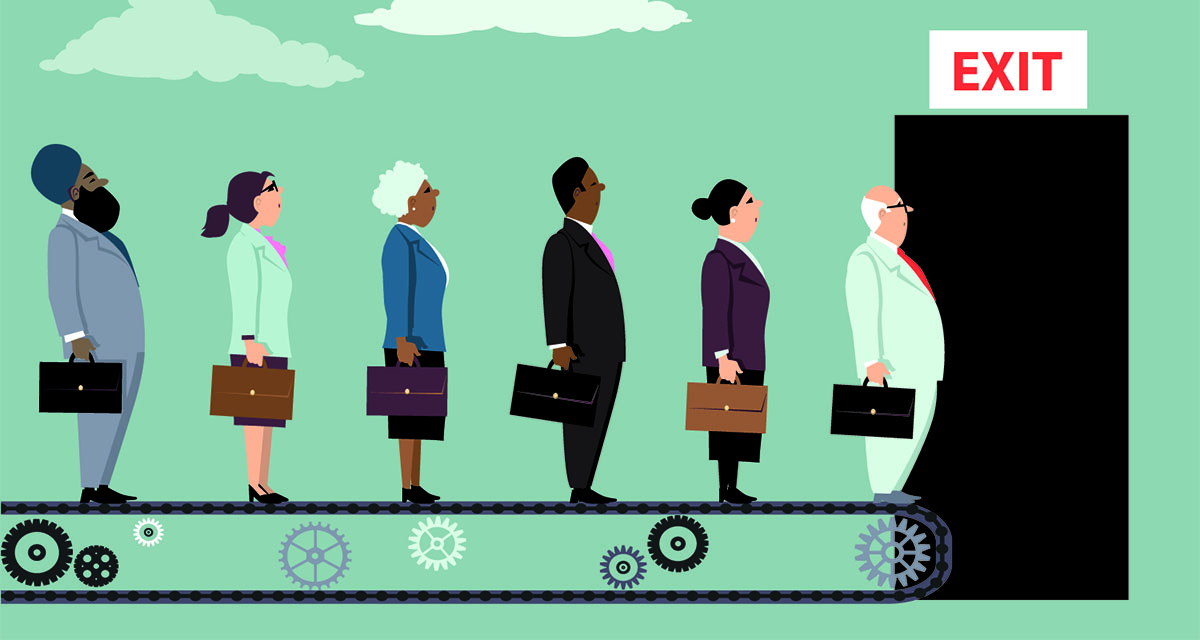
January 05, 2022
SIU professor explores long-term implications of ‘Great Resignation’ and what employers can do
CARBONDALE, Ill. — Although quit rates are at a historic peak, a lot of what we are currently seeing is not so much “The Great Resignation” as it is “The Great Reshuffle,” said Steven Karau, the Gregory A. Lee professor of management at Southern Illinois University Carbondale. He has been studying the phenomenon and its causes, impacts and implications for the future.
There have been big shifts in the labor market before – during eras such as the Industrial Revolution, the Great Depression and the Great Recession – but “The Great Resignation” is different because in large part employees are now calling the shots.
“The pandemic has led many people to rethink their careers and their long-term objectives,” Karau said. “They seek a greater work/life balance, more flexibility, the chance to pursue their passions and a less controlling work environment. The high quit rates create an abundance of job openings and that raises the bar for pay, benefits and flexibility. It shows the importance of businesses offering intrinsic motivators such as growth, achievement and meaning as well as extrinsic motivators such as pay and benefits to get the employees they want and need.”
It didn’t necessarily begin that way. As COVID-19 caused global shutdowns in the spring of 2020, there were wide-scale layoffs. Karau notes that in March and April 2020, 13 million and 9.3 million workers (representing 8.6% and 7.2% of the workforce, respectively) were laid off from their jobs. Particularly hard hit were “locked down” industries, including service businesses and child care.
However, as the job market slowly began reopening, instead of scrambling to take any available position, more and more people began quitting their jobs.
“A large group of people are leaving their jobs voluntarily,” Karau said. “Since the year 2000, there had never been more than 2.4 million people resigning or quitting their jobs in a month. But since May 2021, the numbers have just been going up and up, reaching the highest total in November 2021, when 4.5 million people left their jobs voluntarily. That represented 3% of the workforce and 3.4% of the private sector workforce, leaving 10.5 million job openings in the United States.”
In October, the U.S. Bureau of Labor Statistics (BLS) reported that the quit rate had decreased very slightly to 2.8%, the first decrease in months. The reprieve was only temporary though as the quit rate for November, released Jan. 4 by BLS, again reached the previous September high of 3%. Thus, in November 4.5 million people voluntarily left their positions, an increase of 370,000 from the preceding month. The latest report also indicates that hires remain virtually unchanged at 6.7 million while the layoffs and discharges rate also remained unchanged at 0.9%.
 Karau notes that the biggest increases in quit rates were in accommodations and food services (159,000), health care and social assistance (52,000) and transportation, warehousing and utilities (33,000). Large establishments with 1,000 to 4,999 employees have been the hardest hit by people quitting their jobs, but virtually every sector has felt the impact, and in the small business world, losing even a few employees can make a big difference.
Karau notes that the biggest increases in quit rates were in accommodations and food services (159,000), health care and social assistance (52,000) and transportation, warehousing and utilities (33,000). Large establishments with 1,000 to 4,999 employees have been the hardest hit by people quitting their jobs, but virtually every sector has felt the impact, and in the small business world, losing even a few employees can make a big difference.
The big why
There are many reasons for what is happening, according to Karau.
“Job dissatisfaction levels are high,” he said, pointing to several research studies.
For example, a July study by the Society for Human Resource Management (SHRM) of 1,150 employed Americans found that:
- 52% said their work demands have increased.
- 53% were pondering better job opportunities.
- 55% didn’t feel their salary was adequate.
- 42% sought a better work/life balance.
- 42% thought more often of quitting since colleagues have quit.
“It’s a vicious cycle,” Karau said. “As the quit rates increase, the remaining overworked employees resent having to work even harder to handle the workload.”
On top of that, many companies have had to offer higher wages and/or bonuses to lure in new employees. If those aren’t matched for existing employees, equity and fairness concerns arise and longtime, loyal employees may feel neglected or underappreciated and consider leaving, Karau noted.
Karau also said an August 2021 PricewaterhouseCoopers survey reported that 65% of respondents were looking for a new job and 88% of executives described their company’s employee turnover rate as higher than normal. Yet another 2021 SHRM survey found that among millennials, 64% believe they are underpaid and at least half are considering leaving their jobs because of their managers.
“One of the things we are really seeing is a resistance to authoritarian or overly controlling management styles,” Karau said. “People are tired of being disrespected and told what to do. It’s psychological reactance, resistance to perceived attempts to take away one’s freedom or limit one’s choices. There is a desire by employees for respect, appreciation and feeling like they contribute to the greater good and have a sense of personal growth.”
Other signs of the employee dissatisfaction are the Striketober labor strike in October and the recent surge in union organizing successes across the country, Karau noted.
“Vaccination mandates also have the potential to exacerbate the problem or serve as a tipping point for some dissatisfied employees to finally quit,” Karau said. He noted that in some places, employees have quit their jobs rather than get vaccinated or comply with regular testing.
No going back
As time goes on, employers continue to find it difficult to fill positions. Karau said the available research shows some people can’t return to work for various reasons, some don’t want to, others are determined to get the position, benefits, and/or terms they want while still other individuals have decided the time is right to strike out in a new direction. Also, some individuals have elected to take early retirement and others have chosen to take sabbaticals.
Karau noted the important role of COVID in these changes. In the early days of the pandemic, the closure of countless childcare facilities left some parents unable to return to work. The government provided stimulus payments and expanded the social safety net, and many people also “lived lean, saved a bit and learned they can get by with less,” Karau said.
In addition, a strong economy just prior to the pandemic and the booming stock market recovery thereafter allowed some people, particularly within the upper middle class, to build substantial savings or investments, reducing the pressure to take just any job. Because many had at least a temporary financial “cushion” or had learned to live on less, they weren’t willing to settle for a job that would make them unhappy.
A variety of other factors have also come into play that have perhaps changed the course of history and created a new sense of empowerment in the workforce, Karau said. As the pandemic progressed, millions of employees discovered the flexibility, productivity and opportunities of working remotely and they aren’t ready to give that up. They are on the lookout for ways to work remotely, or at least in a hybrid remote/office arrangement.
Some people are after higher wages or better benefits. Many are seeking a better work/life balance. For others, it’s about finding a position that better aligns with their values and provides a greater sense of personal fulfillment. For some that means a new job, for some a new career. Some are leveraging the current hiring crisis for better positions. A significant number are also going into business for themselves and the number of self-employed workers has surged back to pre-pandemic levels, he noted.
What can be done?
Some business leaders are taking steps to counter the “Great Resignation,” also called “The Big Quit” or “The Turnover Tsunami,” and bring in new employees, Karau said. What that looks like can vary from business to business and place to place.
“It does create an opportunity for businesses that are willing to be progressive and flexible to create a more transformative and rewarding employment experience that is mutually beneficial for the employee and the company,” Karau said.
Among the strategies that businesses can use to recruit and retain employees are:
- Higher pay.
- More competitive benefits.
- Alternative working arrangements such as a hybrid plan that allows employees to work remotely at least some days.
- Collaborative work environments, where employees are involved in planning and decision-making.
- Selecting managers with good social skills or high “emotional intelligence” and providing guidance on how to create a cooperative and respectful organizational culture.
- Other perks that make employees feel appreciated and vested. This can be as simple as giving them flexible work schedules and input into planning their work schedules.
He said 2022 will be a “very telling” year as many of the transitional resources and government supports expire and wane.
